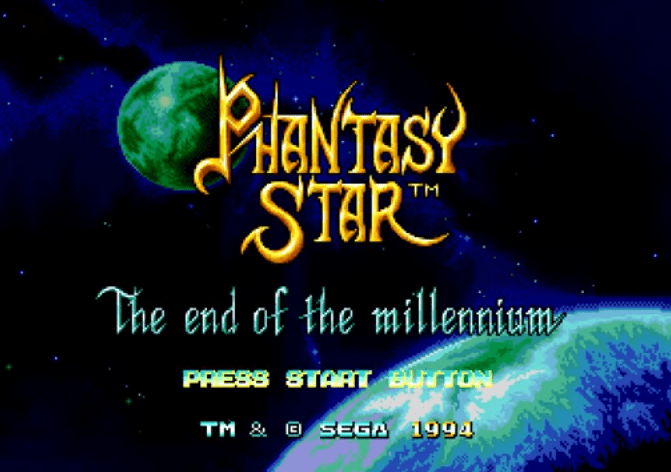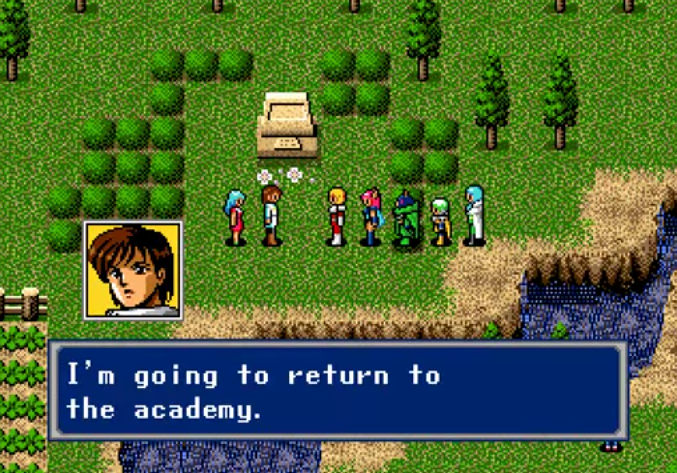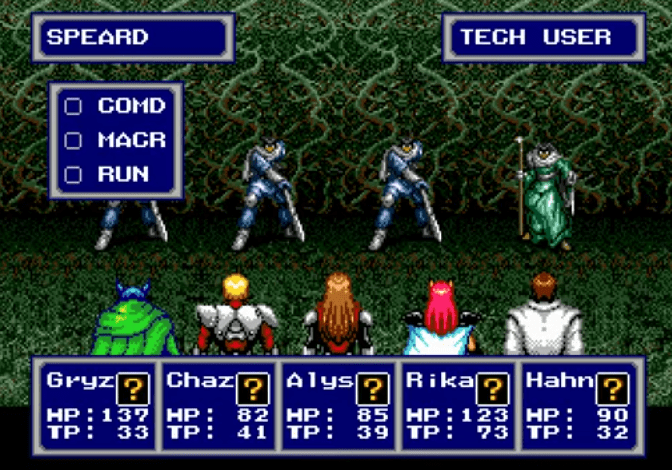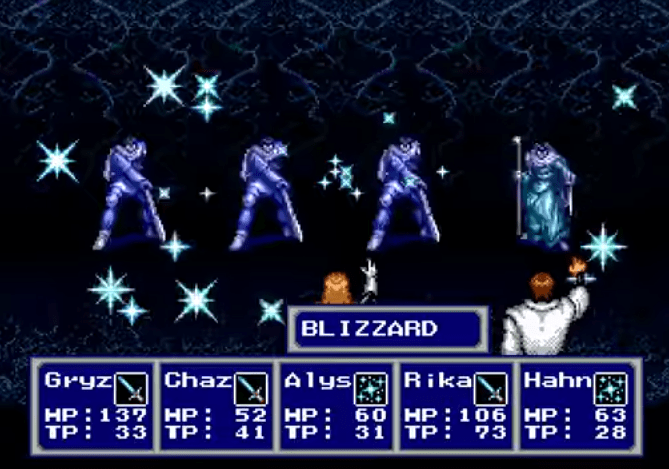After six years and four games, Phantasy Star IV sees the conclusion of the original Phantasy Star series. In the Phantasy Star universe, the games have spanned several thousand years and players were introduced to many different characters including Alis, one of the first female protagonists in computer game history. I have thoroughly enjoyed playing through the series but as George Harrison wrote, “All things must pass”.

PSIV is a role-playing game that was developed and published by Sega and released for the Sega Genesis in Japan in 1993. It would not make an appearance in North America and Europe until 1995. It was later released on the Wii U Virtual Console in 2008. For this review, I played the version found on the Sonic’s Ultimate Genesis Collection (2009) for the PlayStation 3.
Plot
Taking place 1000 years after the events of Phantasy Star II (1989), a cataclysmic event known as the Great Collapse has turned Motavia back into a desert planet, and once again there is an increase in biomonsters appearing throughout the world. Chaz Ashley, a young hunter, learns of the link between the biomonsters and the ecological crisis on the planet. The computer system put in place to control the climate is malfunctioning, and the planet is reverting back to its original desert-like state. It also seems that Dark Force is back, hellbent on destroying the Algol system once and for all.
Gameplay
The gameplay has been kept the same as previous instalments – that is, top down view with the exception of battle mode. As you walk around you will have random battle encounters that allow you to earn money and gain experience points. The more points you earn, the higher each player’s stats will become. The view changes to a third person view fir the battles.

How Does It Handle?
Firstly, the story is more fleshed out than it’s previous instalments, and a lot more engaging. The dialogue in general feels like there was a better translation of the original script. Additionally, during dialogue moments, character profile boxes appear which are beautifully illustrated. It also clarifies exactly who is speaking. During cutscenes, more illustrated boxes are added giving the illusion that you’re reading a comic book. There are also a few nice surprises in the form of characters from previous games reappearing, but I won’t spoil it by telling you who.
There is a significant increase in walking speed for the characters, meaning you can get from A to B a lot quicker. You are also able to increase the speed of the battles and text to help hurry the game along. One annoyance was that when you approach a person and/or object, whilst still pressing that direction, you walk around the target as oppose to stopping in front of it. When you play it, you’ll know what I mean.
The menu system is easy to access and straight forward to navigate. What made me particularly happy is that you no longer need to manually go into your menu and pass items between characters in order for them to equip or use them. The weapons and armour will automatically be available to those who can wield them.
Originally the game came with a very comprehensive 40-page manual explaining every aspect of the game including: Information on each character, what the main items are for, what all the spells and techniques do when used, what injuries you can incur, a map of Motavia, and information on weapons and armour.

Graphics
Oddly, the sprites in the overworld seem to have reverted to PSII (1989) style graphics as oppose to PSIII (1990) or creating newer, more improved graphics. Comparing the two, one could be forgiven for thinking PSIII (1990) was a later instalment. Sadly, these graphics look dated for the mid-90s, especially when compared to RPGs such as Al-Qadim: The Genie’s Curse (1994) and Shining Force 2 (1993). Also, the PlayStation had been released in 1994, upping the expected standard for games in general. When the PlayStation could produce RPGs like Suikoden (1995), what chance did the Mega Drive have?

Buying and equipping weapons and armour has been simplified, and for the better. When you buy a new weapon or piece of armour, arrows appear by the name of the individual who can wield it. Sadly, you cannot see if an item will improve the stats of that character until you buy it and equip it.
PSIV reintroduces fighting animations back into battle mode, similar to that of PSII. However, this time the backgrounds have also been kept. The animations of the physical attacks of the characters are the same as they were in PSII which is a little disappointing. The backgrounds during the battles are more detailed and, in some cases, animated. Additionally in PSIV, you can now use your transport vehicle during battles instead of using your characters.

The enemies are beautifully illustrated and animated. There are some real ugly bastards in this game. A nice little extra is that sometimes, when two or more fighters use a certain technique or spell, it can combine to produce a stronger attack. Sadly, this doesn’t happen everytime you attempt it.
One added bonus is that you no longer need to pay to restore a fallen comrade. You simply go to a hostel, and bed down for the night. In the morning, said comrade will be right as rain.
Finally, and thank Christ, the battle menu is now wonderfully intuitive. It is very easy to learn, and they have finally simplified the way you can chose which enemy to attack. This makes strategic attacks a hell of a lot easier.
Did I complete the game?
Yes, a walkthrough was needed on several occasions though.
What the critics said:
Electronic Gaming Monthly: “This is the fourth instalment in the Phantasy Star series with an improved magic system that allows you to combine spells for more power. Overall 7.75/10”[1]
GameFan: “The graphics are gorgeous, the music is some of the best I’ve heard in a while on the Genesis., full of batchin’ samples, and the game exudes nothing but pure, joyous power. Overall 93/100”.[2]
Mean Machines Sega: “The best pure RPG for the Megadrive…” Overall 88%”.[3]
Sega Saturn Magazine: “The gameplay – controlling inventories, arming combatants, and using spells – is not to everyone’s taste. But the game succeeds by creating climactic moments, introducing new characters and powers, and taking many weird and wonderful plot turns. Overall 90%”.[4]
Game Players: “Newer RPGs like Final Fantasy III make this game look ancient…this still feels like every other Phantasy Star Game…The game offers plenty of items while staying clear and user-friendly. Fighting every other step drives you crazy. Overall 70%”.[5]
My verdict:
“Although the graphics are beginning to look a bit dated, they are still pleasing to look at for the most part. The story is compelling with some nice surprises, and they have simplified the menu systems making them easier to navigate. Personally I feel this is the best Phantasy Star in the series.”
Rating:

What are your memories of Phantasy Star IV? I would love to hear your thoughts, and don’t for get to follow and subscribe so that you don’t miss my latest reviews! You can also find me on Instagram: @nicklovestogame.
[1] ‘Review Crew: Genesis – Phantasy Star IV’. Electronic Gaming Monthly. (June 1995). Issue 71: 46.
[2] Rox, N., ‘Genesis Review – Phantasy Star IV: The End of the Millennium’. GameFan. (April 1995). Volume 3 Issue 4:19 & 27.
[3] ‘Megadrive Review – Phantasy Star IV’. Mean Machines Sega. (July 1995) Issue 33:76-7.
[4] ’16-bit Megadrive – Phantasy Star IV’. Sega Saturn Magazine. (December 1995). Issue 2:91.
[5] Slate, C., ’Genesis: Review – Phantasy Star IV: The End of the Millennium’. Game Players. (February 1995). Issue 49:38-9.
